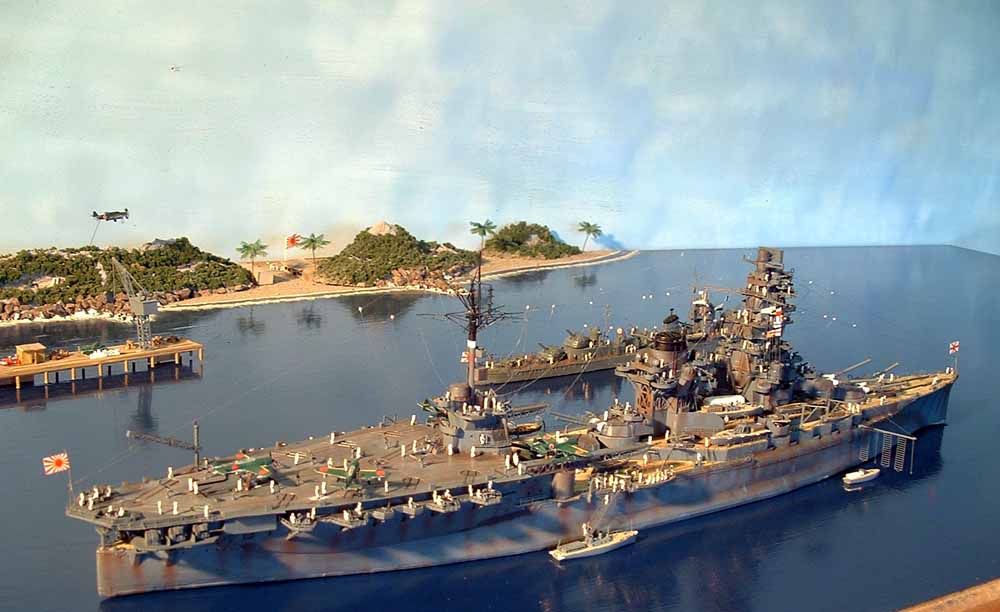by Kym Knight

1/350 IJN Ise, late 1944 (Fujimi)

There's not a lot to say about the build as it went together very easily. Once I water-lined the hull, the only thing that kept me scratching my head was the constant checking of ship and P/E instructions to see what must be replaced or added to. The only thing I'm still kicking mysely over is the mistake I made when taping the cut line for hull water-line. I put the tape on the bottom of the lines width, thereby adding about 2.5mm to the draft. No problems you say, well when I add the base plate of 2mm styrene sheet, the whole thing sits too high by 2 to 2.5mm and that's a lot in 1:350. It won't be a problem in it's final position as I've routered out the hull shape in the base which will have it sitting at it's correct draft.
The Ise was the lead ship of a class of two ships, which was herself and her sister ship, the Hyuga. Ise was supposed to be the third Fuso-class ship, but design flaws were found, and instead was built as a ship of a new class. She did not see combat during the early days of the war in the Pacific and after the loss of four precious aircraft carriers at the Battle of Midway, the Japanese decided to convert her into an aircraft carrier herself which would be capable of carrying more than fifty planes. However; due to the lack of both time and resources she would be instead converted to a hybrid, with the Hyuga being converted to the same reconfiguration as well. Both ships' No. 5 and No. 6 turrets were removed and replaced with a hangar and a "t" shaped elevator. The new ship configuration allowed her to launch planes, but not recover them. The two ships would not be able to be used in their new configuration because of the severe losses of both planes and aircrews in the Battle of the Philippine Sea and the American air strikes off Formosa(present day Taiwan). The Ise and Hyuga were later used as part of Vice Admiral Jisaburo Ozawa's Northern Force, which acted as a decoy for Admiral William "Bull Halsey's Task Force 38 during the Battle off Cape Engaņo. She and the Hyuga and some other ships escaped, but it was not the same for the four aicraft carriers (one CV and three CVLs) which included the Zuikaku, the last surviving aircraft carrier that participated in the attack on Pearl Harbor. In early 1945 the Ise, Hyuga, and and a light cruiser were ordered to go to Singapore to be loaded with badly needed war supplies like oil and returned to Japan. After successfully returning to Japan, she was used a floating anti-aircraft platform, which attracted planes from the American carrier task forces. Her hulk was left in this area for some time and was scrapped without being raised in 1946-1947.
